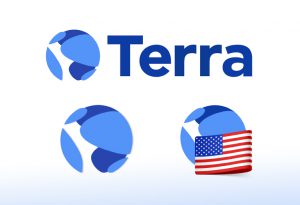
Table of Contents
ToggleIn the world of cryptocurrencies we have thousands of projects. Each one offers unique features that differentiate them from the rest and make us choose one or the other. Among these projects stands out USDC, a stablecoin developed by Centre and Coinbase. In this post we will tell you all about this coin.
USDC was developed with the aim of competing with USDT, in order to integrate with the payment system of the companies that created it, Centre and Coinbase. Its development is based on the objective of presenting an operating structure that surpasses its counterparts in terms of transparency. Below we tell you how it works and what advantages it offers.
USDC History
As mentioned above, it was developed by Circle Internet Financial and Coinbase, two companies regulated in the United States. The two companies joined forces to form the Center Consortium.
The first time the project became known was in May 2018 when Circle first announced its launch. By August 2018, USDC 2.0 and new features that went along with it were introduced. The currency was finally released to the market in September of the same year when Circle started releasing tokens.
The decision to create USDC was based on the fact that Tether had major operational problems, among them the currency was slow, costly to mobilize and was not prepared for the future of decentralized exchanges, since it only worked on OmniLayer and Bitcoin. This was compounded by other problems with transparency policies, most notably in the lack of audits verifying that Tether (USDT) actually held backing with the dollar.
Due to so many problems, many companies decided to look for a solution that would take Tether out of the market. This is where Coinbase and its alliance with Circle came in to create Centre and make USDC the best choice of currency anchored 1:1 to the dollar.

Is USDC a stablecoin?
According to the European Central Bank (ECB), stablecoins are digital units of value that differ from existing currencies. Each stablecoin has stabilization tools with the aim of minimizing fluctuation in its price against other currencies or groups of currencies.
Stablecoin’s main function is to be an instrument that traders use in cryptocurrencies to get out of volatile markets. In addition, Stablecoins also perform a function in cross-border trading, for example, following Bitcoin as the first use case.
The USDC tokens issued are fully backed by a pool of US dollars. The independent accounting firm, Grant Thornton LLP Circle is responsible for creating reports to corroborate that this is indeed the case and Circle is audited on a regular basis.

How does USDC work?
The first thing to know is that, being a currency pegged 1:1 to the dollar, it has no issuance limit. Issuance depends on dollar deposits in accounts protected by Centre.
Subsequently smart contracts are enabled to create the same amount of USDC deposited in dollars. Once the smart contract is created the USDCs are deposited in the ETH address where the buyer’s USDCs will be stored.
When a final withdrawal of USDC funds from the token’s smart contract is intended, a process called token burning is used. This means that when a user decides to make a withdrawal for example 100 USDC to take them to a bank, the 100 USDC will be withdrawn from Centre’s accounts to make actual withdrawal.
The 100 USDC is then burned, with the goal of balancing what is on the blockchain with what is in the bank accounts. This ensures that, at all times, there is a 1:1 backing with dollars for each currency within USDC.
The platform allows its users to perform four basic operations. These are to tokenizing the US dollar, employing USDC to withdraw cash, making transfers to an ERC-20 compliant Ethereum address, and making deposits from an external Ethereum wallet address.
On the other hand, the purchase process is very simple. USDC can be purchased at any regulated exchange house. Moreover, as USDC is an ERC-20 standard token, we can use it in any application that supports this standard. Circle does not charge any kind of commission to USDC users for the use of the currency or for its tokenization. However, it should be noted that we do have to pay a $50 fee for both fake bank transfers and rejected transfers.
Relationship between USDC and Ethereum
As we already know, USDC is both a stablecoin and a token created on the Ethereum network. Even if the value of Ether varies, USDC will retain its value regardless. Having been created on the Ethereum blockchain it is compatible with ERC-20 tokens. This operation is intended to support fast USDC transfers on the Ethereum network.
USDC uses the security of the Ethereum blockchain and uses its technology in smart contracts and its high support among developers. For these reasons its developers decided to create it on the Ethereum network. This means that two Ethereum wallets can send and receive any amount of USDC at any time and from anywhere in the world.
Advantages and Disadvantages
Like everything else, USDC has advantages and disadvantages that characterize it. Here are some of the most important ones:
Advantages
- Instant transfers. USDC allows you to issue instant, secure, global transfers at a low cost.
- Stable. The price never varies due to its 1:1 parity with the USD.
- Altcoin trading operations. We can carry out relatively stable altcoins trading operations and cryptocurrency management.
- Haven for investment in cryptocurrencies.
Disadvantages
- Stable price. Just as its stability represents an advantage, it may represent a disadvantage by not increasing or decreasing its price. Therefore, large increases cannot be expected in the future.
- Rather than functioning as an investment, its operation is focused solely on improving the convenience of transactions.
- Unlike other stablecoins such as DAI or Dollar On Chain (DoC), USDC has a higher degree of centralization.


